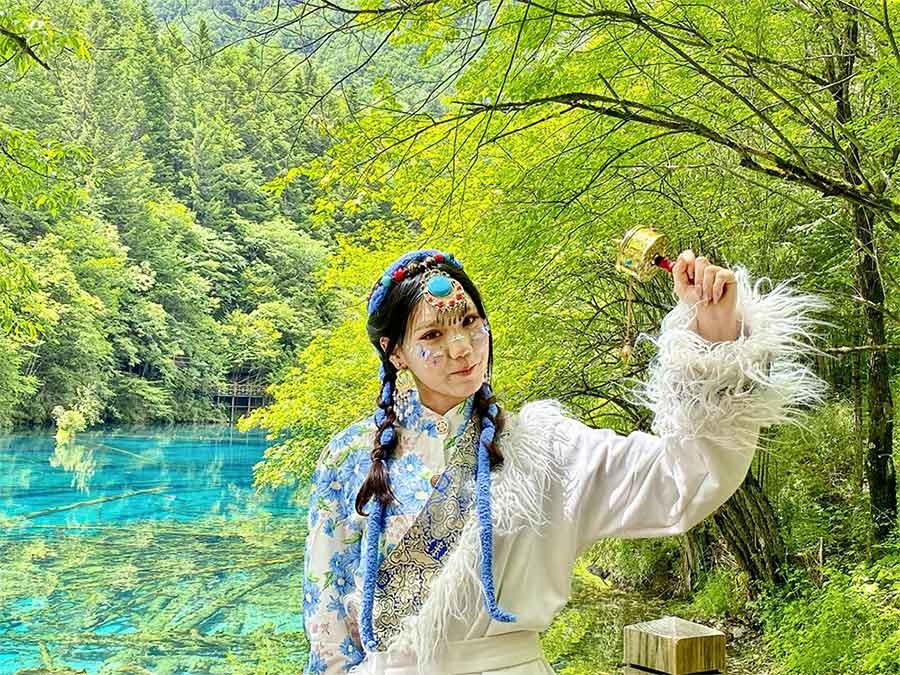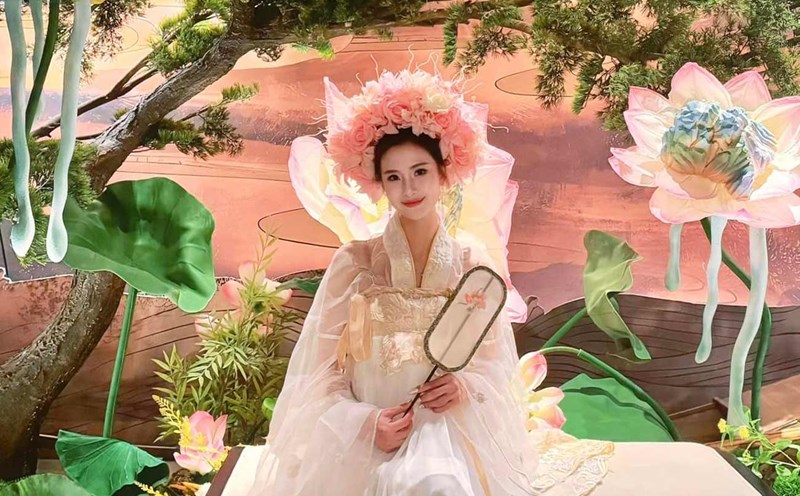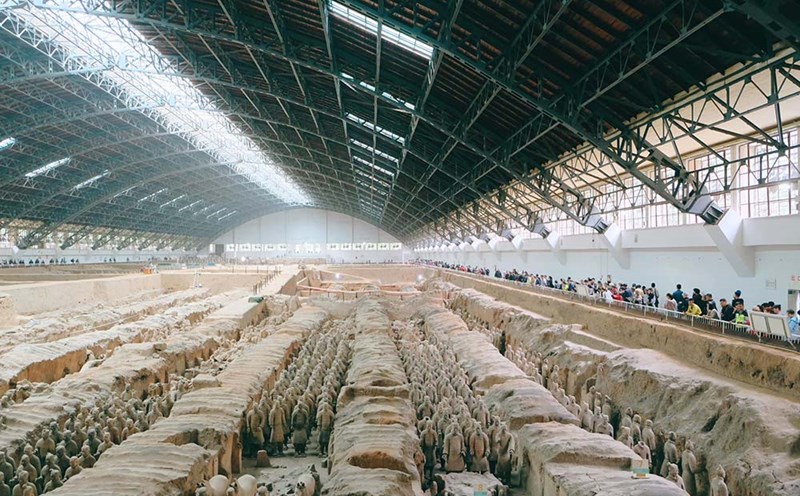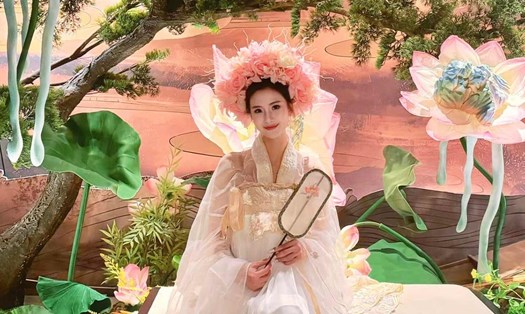Spring, summer, autumn, or even winter with eye-catching white snow, Jiuzhaigou is beautiful. The lake is as green as a paradise on spring and summer days; The lake and lakeside are ablaze with red and yellow leaves - as beautiful as if they were out of this world in the fall; Or the heart-wrenching sadness, the immense poetry of white snow in winter.
All have created the classic beauty of Jiuzhaigou, in the Aba autonomous continent, northern Sichuan province (China) - a giant province with magical nature, home to 84 million people.
“9 remote villages” welcome 8 million visitors each year
Currently, this World Biosphere Reserve (recognized in 1997) contributes up to 60% of the local economy's revenue. Every year, the "golden egg" of the nine Tibetan villages of Jiuzhaigou alone attracts nearly 8 million tourists, bringing in truly huge amounts of money: 1.5 billion USD.

Located on the edge of the Tibetan plateau - the highest plateau in the world, in the north of Sichuan province, Jiuzhaigou is 72 thousand hectares wide, and is the highest ranked conservation area in China (level 5A). . This is the Biosphere Reserve and has received many other world titles. Moreover, the scenery here is surreally beautiful.
We walked endlessly along the Y-shaped diagram of the vast area of Jiuzhaigou, continuously green lakes and waterfalls with beautiful names appeared.
They do tourism too methodically and meticulously. Wooden walkway along the lake. The path in the forest to cross thousands of meters of mountains from one lake to the other is also paved with wood, spacious, and even divided into one-way lanes (so that people climbing up and people going down the mountain don't share the same path).
The place to cross the road with cars also allows pedestrians to go underground, very safe. At the "culvert" place, there are enough stone stele, concrete pillars, drawings of birds, animals, geological heritage, clear Chinese and English captions, to promote and analyze the beauty of the Cuu Long region. Camp Cau thoughtfully.
This “paradise on earth” is formed by high-altitude limestone mountains and carbonate rock layers formed by the uplift of the earth's crust, both by glacial activity and by miraculous hydrology in general. . Because of the ice effect, even though it is very high, Jiuzhaigou still has a landscape of many calcified lakes and waterfalls, like many lyrical hair pouring from the white clouds to the bottom of the yellow moss. .
The land is filled with grass and reeds as soft as the fur of a giant wild animal, and birds sing freely. In the middle of the deep green and golden "grass" is the iridescent green stream that slithers (or stands still). Science calls it the travertine landscape. This name is like an adjective expressing a unique nuance about the beauty of the landscape.
Why are the colorful lakes in Jiuzhaigou?
In Tibet, it is said that jade-green water is due to the high content of the element magnesium. So high that the water has many substances that are harmful to human health (if used as drinking water), even though the eternal snow mountain above, year after year leaks pure water down to become a green lake, Holy Spirit Lake. then Devil's Lake. It was so green that it felt like giant frozen pieces of jade, or as hard as cold steel. Crawled down, picked up the water and found it was clear. So clear that it's cold.
The water in Jiuzhaigou is clear and pure. The dreamy blue lake water shines from the blue lake, the blue sky and clouds compete to dye the lake. The white snow mountain adds contrast, silently and arrogantly reflecting under the clear lake surface.

Science explains that the colorful lakes in Jiuzhaigou are due to the high concentration of calcium carbonate "and the water here is so clear that you can see the bottom even in very deep places". Clear water, lake shore, lake bottom, artifacts in the lake from fallen trees, rocks, moss to foreign objects precipitated as if "petrified" by a coating of minerals... to the clouds, sky, and surrounding forests Changing color according to the rhythm of spring, summer, autumn, and winter... so the lake's color is diverse. All create incredibly beautiful backgrounds. It is true that that feeling does not belong to this world of many profanities.
According to Tibetans, they most like the legend of the passionate love between the clouds and high mountains of the male god Dago and the beautiful goddess Semo. The handsome and handsome male god gave the heavenly goddess a sparkling and magical magic mirror. Who would have thought that while exchanging hands and eyes, the jealous demon rushed forward. The fairy dropped the mirror in the area that is now the 72,000-hectare World Heritage site of Jiuzhaigou. The magic mirror broke into 108 pieces, which are 108 beautiful sacred lakes that attract millions of tourists each year today in Jiuzhaigou. 108 is a number with many meanings in Buddhism.
Refer to Vietravel's Chengdu - Jiuzhaigou itinerary (6 days 5 nights). Air tickets with Sichuan Airlines. Departure schedule is every Saturday from Hanoi. Package tour from: 15,900,000 VND.






